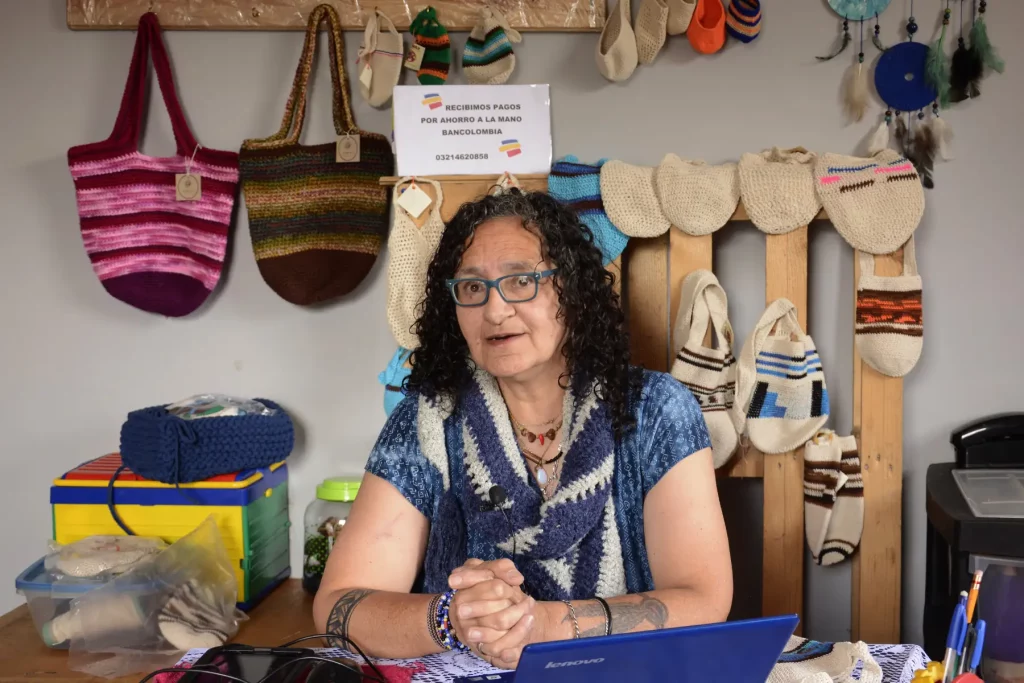Two-thirds of the world’s population uses the Internet, but 2.7 billion people remain offline. This means that one in three people cannot benefit from the economic, educational, political, social and health potential of being connected. This article explores the concept of digital equity and its significance in today’s interconnected world. It delves into the definition of digital equity, its importance, the relationship between digital access and equity, the causes of digital inequities, the digital divide concept, the consequences of digital inequity, and strategies to bridge the gap and improve digital equity.

What is digital equity?
Digital equity refers to the state where every person and community has the necessary information technology resources to participate in society, democracy, and the economy fully. The term encompasses not only access to devices and the Internet, but also the ability to use and benefit from them effectively. According to National Digital Inclusion Alliance, it is crucial for active involvement in civic and cultural affairs, employment, continuous learning, and access to vital services.
Why is digital equity important?
Having digital equity means that everyone has equal access to information, education, job opportunities, healthcare services, and civic engagement platforms. This fosters inclusivity, promotes social and economic justice, and helps individuals thrive in a technology-driven society. Without digital equity, marginalized communities may be left behind, worsening existing disparities and hindering social progress.
Causes of digital inequities
The following list is not exhaustive and draws on various sources, including studies by the International Telecommunications Union (2020), United Nations (2019), Robinson et al. (2015) and DiMaggio et al. (2004) that have explored barriers to digital equity.
- Income: Technology use rates increase with higher family income levels, as affordability can be a barrier for low-income individuals and families. Both within and across countries, lower incomes correlate with lower rates of Internet use.
- Region and place of residence: Disparities in digital access exist between urban and rural areas or regions where infrastructure and connectivity may be limited in specific locations. As of 2022, 82% of people living in urban areas across the world are using the Internet, which is 1.8 times higher than the percentage of Internet users in rural areas.
- Employment status: Employed individuals may have better access to digital technologies and resources than those who are unemployed or underemployed. In addition, digitally disadvantaged workers and entrepreneurs face barriers to full participation in the economy that their more digitally advantaged peers do not confront.
- Age: Older individuals may face challenges in adopting new technologies and may have lower digital literacy skills, which can contribute to the digital divide. Studies have shown that up to 27% of the older urban population lacks internet connectivity.
Some initiatives are intended to help reduce barriers. For example, the Internet Society Foundation funded United Way the Netherlands to implement the Joining Forces project that connected 300 elderly individuals and 300 refugees through technology.
- Gender: Gender-based disparities in digital access and use can exist, although the extent of these disparities varies by country and context. On average, women are less likely to use the Internet than men. Men are 21% more likely to be online than women globally, rising to 52% in Least Developed Countries.
Our grantee The Alliance for Affordable Internet found that countries have missed out on $1 trillion USD in GDP as a result of women’s exclusion in the digital world.
- Education: In 40% of countries reporting data, less than 40% of individuals reported being able to carry out a digital activity considered a “basic” information communication technology (ICT) skill.
In addition, higher levels of education are often associated with higher rates of Internet use and digital skills. Limited educational opportunities can hinder access to technology and digital literacy.
Our Grant Program SCILLS, aims to contribute to economic inclusion and increase educational opportunities by supporting individuals and communities to more knowledgeably and skillfully use the Internet.
- Race-ethnicity: Internet access and usage disparities exist among racial and ethnic groups. Factors such as income and education contribute to these disparities, but differences in Internet use persist even when controlling for those factors. In addition, digital inequalities often augment racial and ethnic disparities because of the economic division between the Global North and the Global South.
- Language: Language barriers can hinder access to digital resources, especially for non-native speakers who may struggle to navigate interfaces and find relevant content.
Our grantee Pollicy conducted a study about experiences and challenges that non-English speakers face online, focusing on access, usability and safety issues.
- Disability: Inadequate accessibility features and accommodations in digital tools and platforms can hinder individuals with disabilities from fully participating in the digital space.

It’s important to note that these factors can interact and compound each other, leading to complex and overlapping digital inequities and the need for an intersectional lens to address this social problem and promote digital equity.
What is the digital divide?
Since the mid-1990s, researchers have found persistent differences in technology use by social category. The United Nations defines the digital divide as the gap between people who have access to and use Information and Communications Technologies (ICTs), including Internet connectivity, Internet-enabled devices, and digital literacy skills, and those who do not. Access to all three is crucial for communities to establish a strong and sustainable connection to the digital world.
This is especially important as critical aspects of society, like education, workforce development, and innovation, move online. Internet connectivity is considered the foundation for participating in a digital society and a crucial element of digital human rights. Without a reliable, affordable, sustainable, and inclusive Internet connection, people are systematically excluded from the benefits of digital technology, participation in the digital society, and access to digital services.
The group of people who are not connected to the Internet mostly come from disadvantaged communities. The digital divide reflects and amplifies existing social, economic, and cultural inequalities such as gender, age, race, income, and ability. The communities that are most affected by this divide include, according to the UN:
- Women and girls
- Children and youth
- Older people
- Urban and rural poor
- Marginalized or minority communities
- Persons with disabilities
- Indigenous communities
- Refugees and migrants
Consequences of digital inequity
Unequal access to digital resources can have a range of adverse effects. It reinforces existing societal, economic, and education disparities, creating a disadvantage cycle. It also restricts people’s ability to obtain information, education, employment opportunities, government services, healthcare knowledge, social and political participation, and other essential services. This can limit social mobility, worsen inequality, and widen the gap between digitally empowered and marginalized communities.
How to close the digital divide and improve digital equity:
- Infrastructure investment: Expanding broadband infrastructure and improving connectivity in underserved areas. For instance, you can check our Connecting the Unconnected program: https://www.internetsociety.org/funding-areas/connecting-the-unconnected/
- Digital literacy programs: Providing training and education to enhance digital skills, mainly targeting marginalized communities, older adults, and individuals with limited access. Or combining traditional education with ICT modalities to enhance learning and teach students about the Internet. For example, you can check our SCILLS Grant Program here: https://www.isocfoundation.org/grant-programme/scills-grant-programme/
- Affordability measures: Implementing policies to make internet services and devices more affordable, particularly for low-income individuals and families.
Our BOLT Grant Program support teams of creatives, technologists, researchers, and social/cultural workers to design and build prototypes and pilots that will bring into reality innovative solutions to Internet connectivity particularly among communities where current technologies are unavailable or not readily accessible.
- Accessibility initiatives: Ensuring digital tools, platforms, and content are accessible to individuals with disabilities through inclusive design and adherence to accessibility standards.
- Partnerships and collaborations: Encouraging public-private partnerships to share resources, expertise, and initiatives that promote digital equity.
Creating a fair and inclusive society in the digital age requires digital equity. This means addressing disparities in digital access, promoting digital literacy, and considering the needs of marginalized communities. To unlock the full potential of technology for everyone, we need to bridge the digital divide. Achieving this requires an intersectional approach that involves infrastructure development, affordability measures, education, and accessibility initiatives. Doing so can help to ensure equal opportunities and empower individuals in the digital realm.
